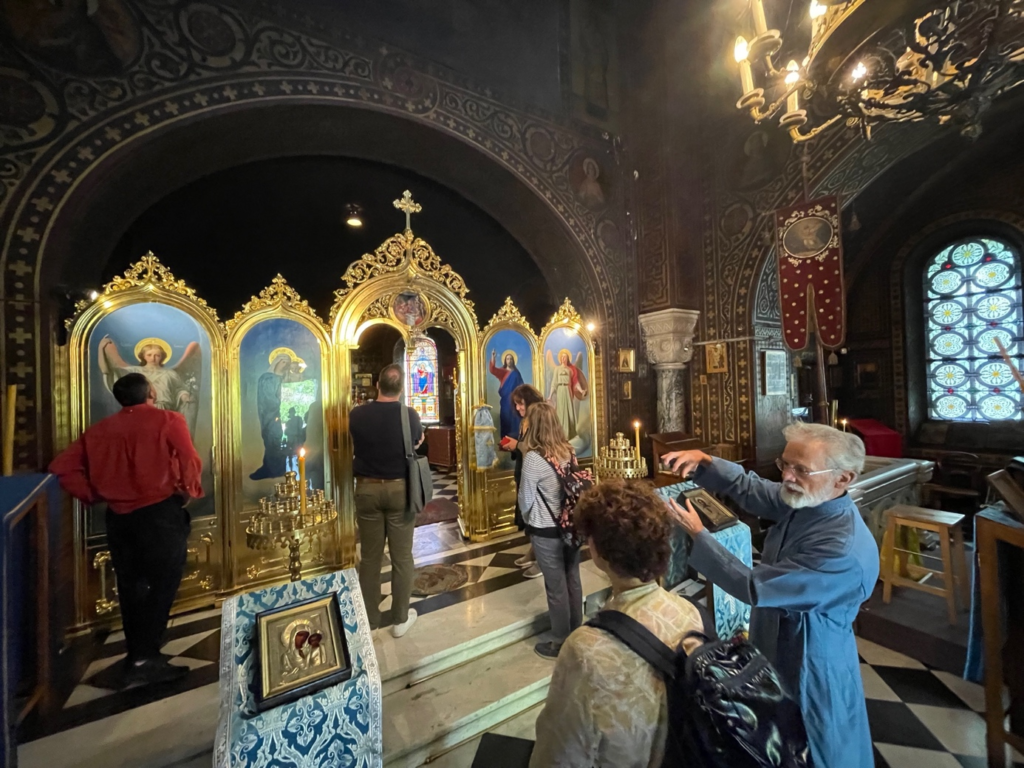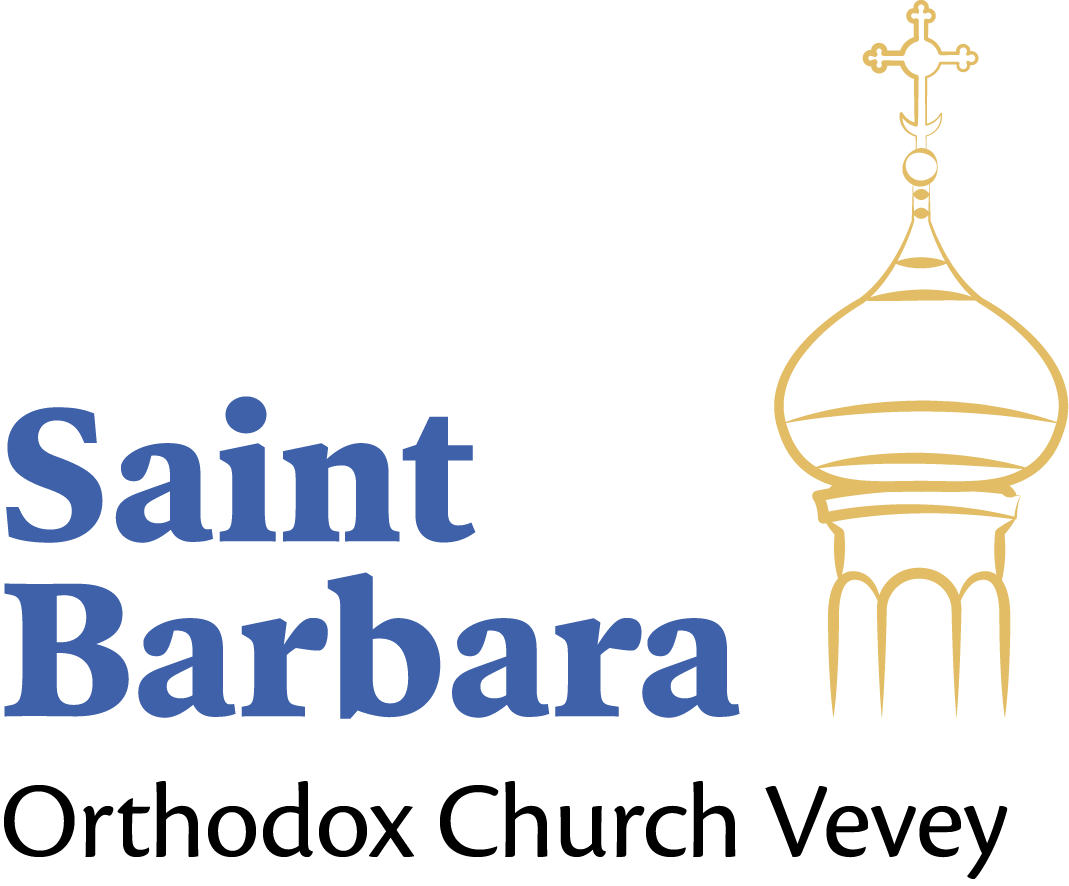During the meeting on the shores of Lake Geneva on September 1, 2022, members of the Swiss Network of Historicism (a movement initiated in the 1850s that led to the revival of various architectural and artistic styles) have visited several iconic buildings of historicist architecture. Among them is the Saint Barbara Orthodox Church in Vevey, which had the honor of welcoming this delegation.
The visit to the church was concluded with the explanations provided by Michel Vernaz, who has been serving as the protodeacon of the Orthodox Church of Vevey for many years, and Olga Kirikova, architect at “DOM architectes associés”, who has been leading the church restoration projects since 2017. Once inside, it becomes evident that the architecture, layout, and furnishings make up a total work of art (“Gesamtkunstwerk”). The murals, paintings, colorful stained-glass windows, and church furniture made by Russian and Swiss artists contribute to the high value of the building registered as a historical monument (1977) and a national monument (2006), including its interiors (2019).
A Monument to Saint Barbara
The church was built with Count Petr Pavlovich Shouvalov’s own funds. Shouvalov (1819–1900), one of the many Russians residing in Vevey at the time, dedicated this piece of architecture to the Holy Megalomartyr Barbara in memory of his daughter Varvara (1850–72), who passed away far too young.
Erected between 1873 and 1878 in neo-Russian or Russian-Byzantine style, the church is a typical example of historicism then in vogue in architecture that referred to different stylistic periods and sometimes came from different cultural backgrounds. The building that combines elements of ancient Russian architecture and Byzantine tradition reflects the interest that arose in Russia in the 19th century for medieval Russian architecture and the Byzantine architecture of the Caucasus, which was studied, among others, by the Russian architect David Grimm (1823–98) and presented in his book “Monuments of Byzantine Architecture in Georgia and Armenia” (1864).
The architectural plans for the church, the caretaker’s cottage, and the garden are attributed to the Russian architect of Ticino origin Ippolito Monighetti (1819–78), while the realization was entrusted to Jean-Samuel Késer-Doret, an architect from Vevey. Monighetti studied in Moscow and Saint Petersburg, then traveled to Italy, Greece, and the Ottoman Empire before becoming an architect at the Russian Imperial Court. In particular, he built in the early 1860s a palace for Alexander II in Livadiya (Crimea), with a church in the Russian-Byzantine style that became very popular in Russian religious architecture from the middle of the 19th century onward.

Useful resources
- The Swiss Historicism Network brings together specialists from universities, museums and the conservation of historic monuments who are committed to studying, promoting and positioning the heritage of historicism in Switzerland at the international level. Each year, a symposium open to all interested persons is organized and an annual review is published. It is freely accessible on the Repository of ETH Zurich as well as on the network’s website.
- For more information on the history of the Orthodox parish of Lausanne-Vevey, go here.
- On the architect Monighetti, see the publication Владимир Листов, Ипполит Монигетти, Ленинград: Стройиздат, 1976 (Vladimir Listov, Ippolit Monigetti, Leningrad: Stroiizdat, 1976).
